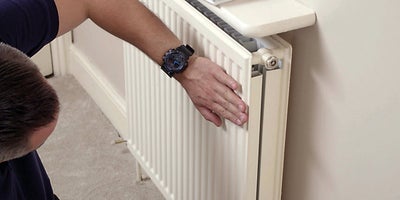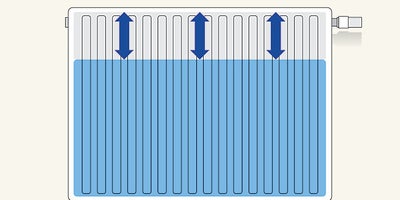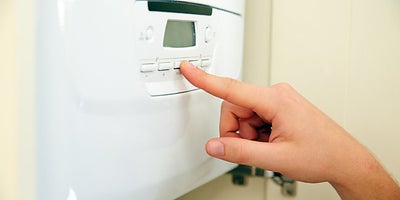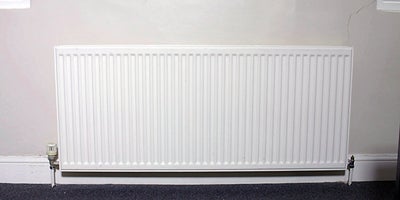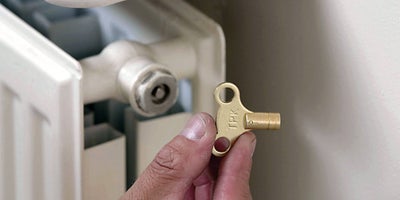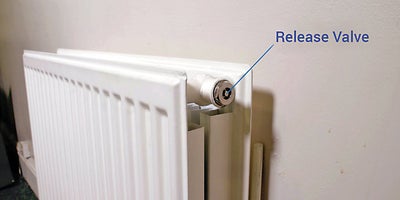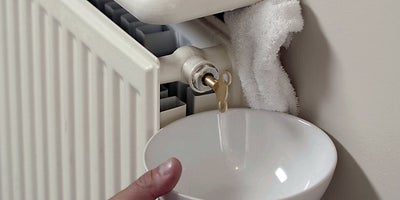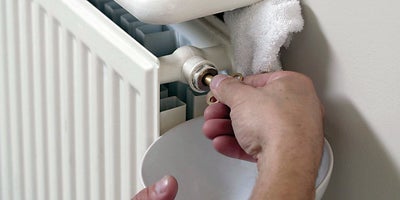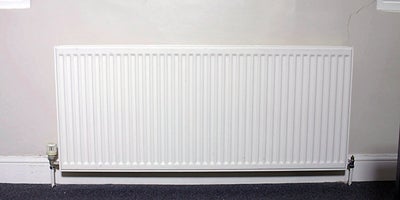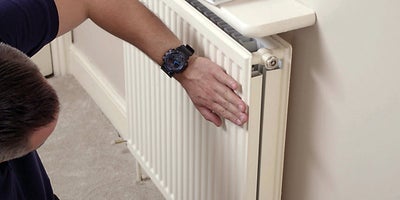How to bleed a radiator
Planning & preparation
- Over time, air can seep into your central heating system and will tend to bubble up to the top of your radiators, especially those furthest away from the boiler and those fed by downpipes. This air can affect how efficiently the radiators heat your rooms. It can also make them noisy as air moves around the system
- When you come to release air from a radiator, water can spray out, so you’ll need to protect your paintwork and flooring. Wedge one towel between the radiator and the wall, and lay another on the floor beneath. If directional valve plugs are fitted on your radiators, always direct the bleed hole towards the floor to help you catch the water
- Place a small bowl underneath the radiator valve and keep another towel handy to catch any water that comes out
Do it right
- Because boiler pressure can drop after bleeding, make sure you know how to re-pressurise your boiler in advance. You’ll find this information in your boiler’s handbook. If you’re unsure about re-pressuring your system, always ask a professional.
Staying safe
- Make sure your central heating and hot water are switched off at the boiler before starting to bleed your radiators
- Make sure the radiator is completely cooled before you start, otherwise any water that escapes could be dangerously hot
- This guide is designed to guide you safely through the process of bleeding radiators. If you’re in any doubt, please seek advice from a plumber and always follow your boiler manufacturer’s instructions
Aftercare
- A couple of hours after you’ve finished, check all of the radiators you’ve bled carefully to make sure the valves aren’t leaking
- It’s worth checking your radiators for cold spots once or twice a year to see whether they need bleeding
- The end of summer is a great time to bleed your radiators as you can make sure your central heating system is working efficiently before the cold weather arrives
